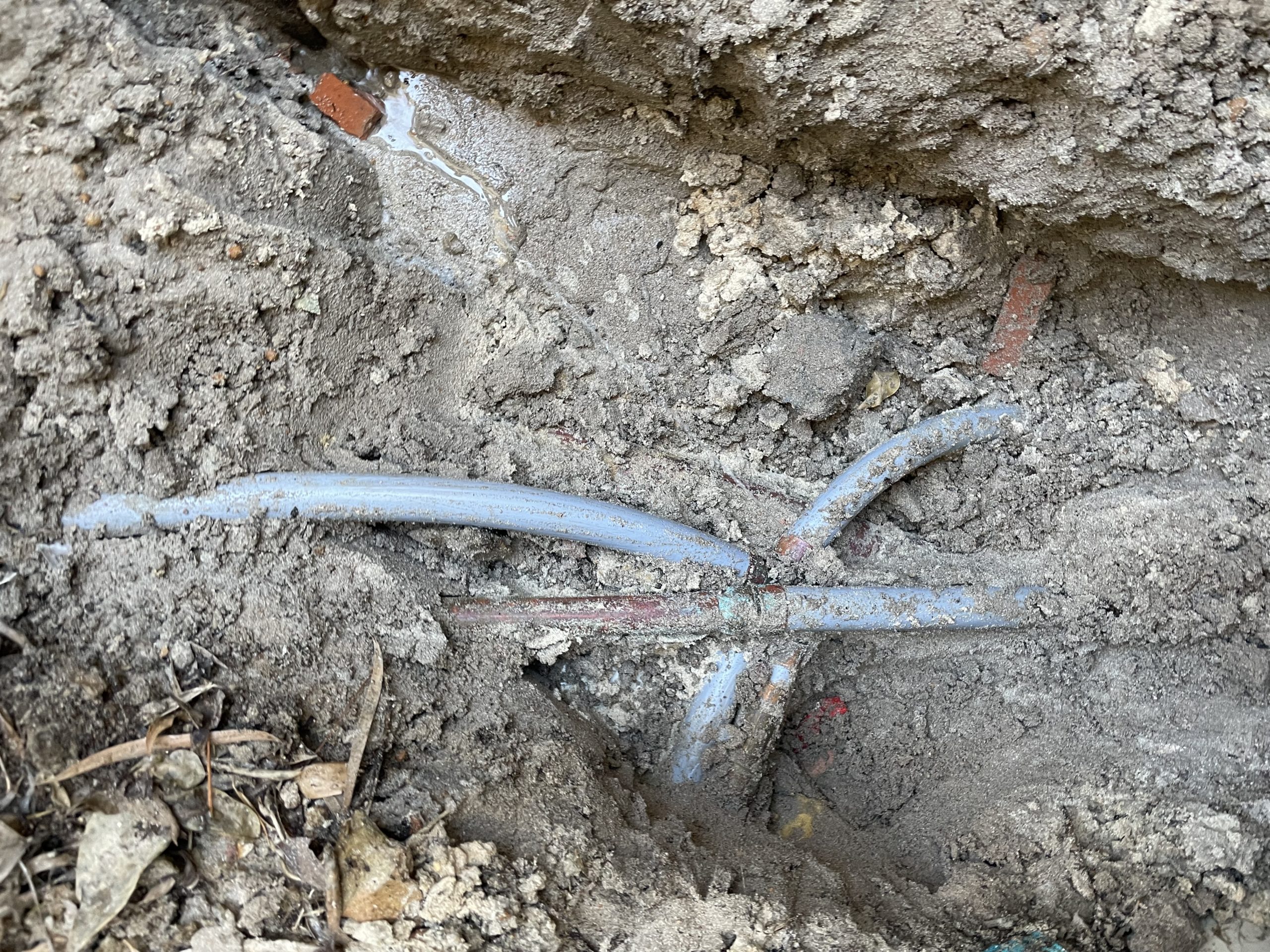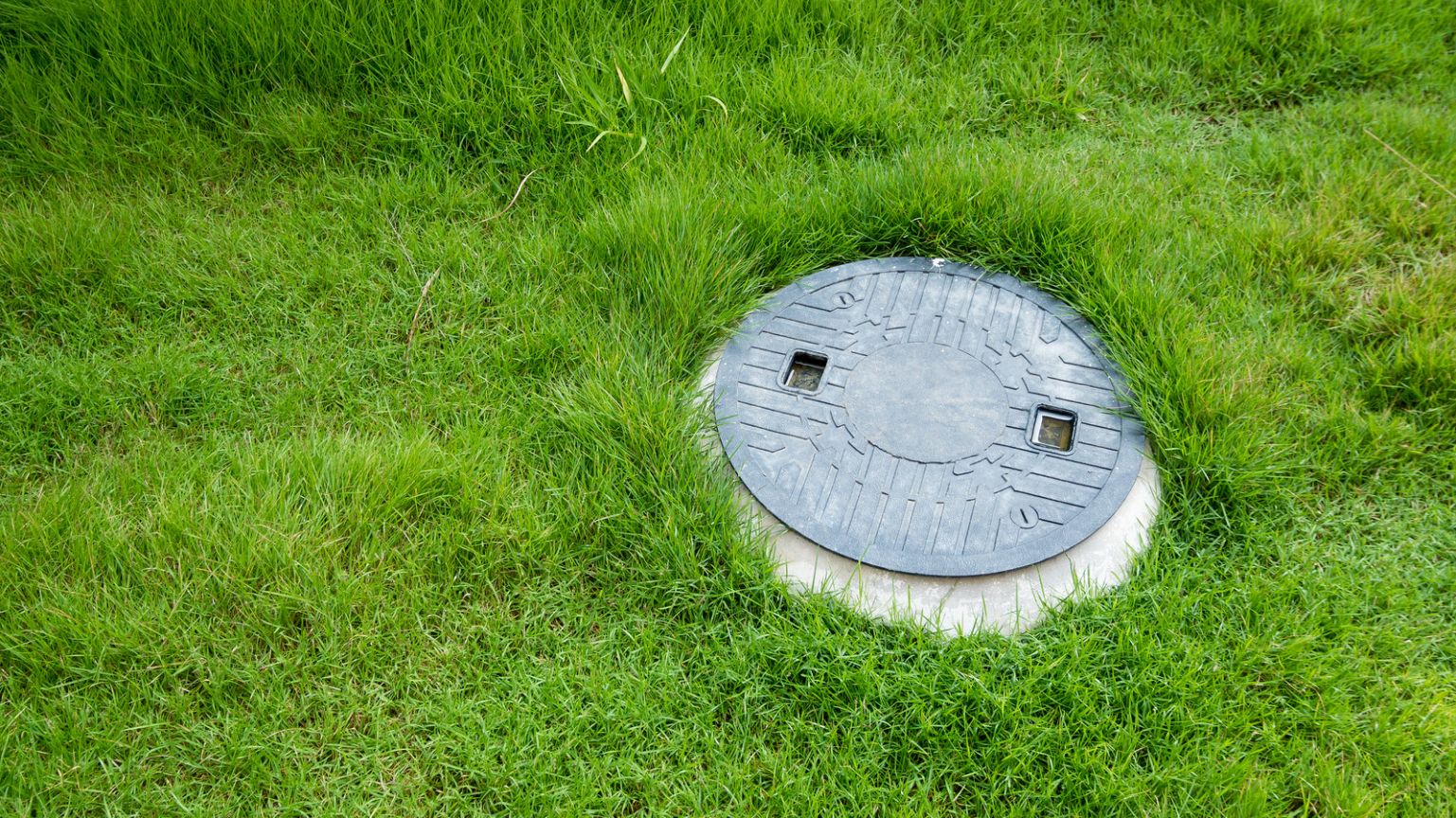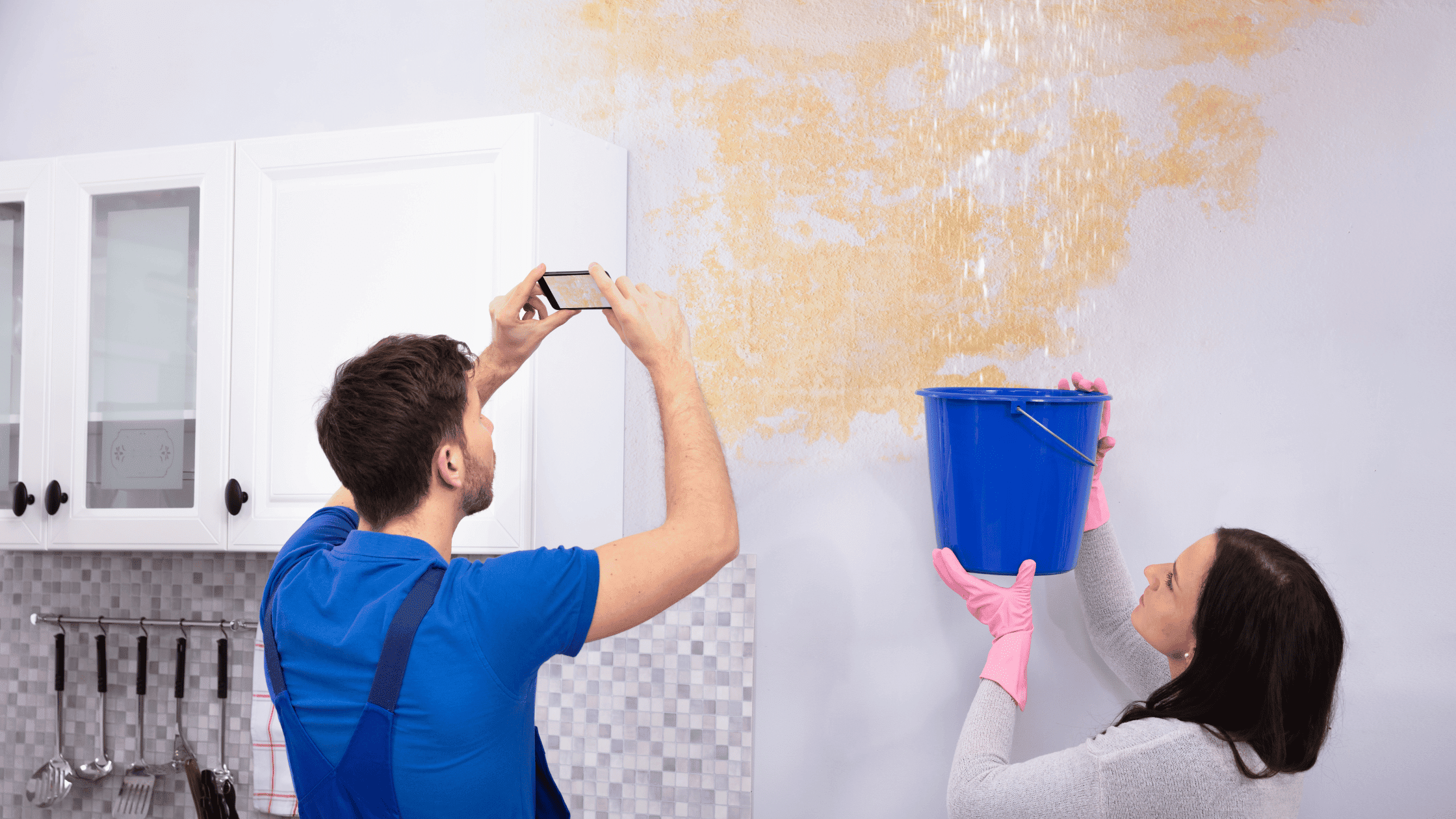Water leaks can be a frustrating and costly problem for homeowners. It’s always best to get a professional to repair any leaks to avoid further damage or reoccurrence. However we understand that is not always possible. So we discuss how to find, repair and prevent a leak or at least stop it from causing more damage while you wait for a professional to arrive.
What we cover in this guide:
- How to find a leak
- Stop a repair a leak
- How to prevent a leak
- Leaks in the Kitchen and How to Repair Them
- Leaks in the Bathroom and How to Repair Them
- Roof Leaks and How to Repair Them
- Basement Leaks: Prevention tips
- Laundry Room Leaks: Causes and Solutions
- Attic Leaks: How to Detect and Fix Them
- Garage Leaks: Common Causes and Prevention Strategies
- Living Room Leaks: Causes and Solutions
How to find a leak
Here are our top 5 tips to find a leak in your home without any equipment.
- Conduct a visual inspection:
Check all visible pipes, fixtures, and appliances for any signs of water leaks, such as water stains or dampness. - Paper towel test: Wrap a piece of paper towel around pipes and other fixtures, and check for any signs of wetness or dampness.Check for musty odours: Water leaks can cause mould and mildew growth, which can produce a musty odour.
- Listen for dripping or running water: Some water leaks can be detected by the sound of dripping or running water. Listen for any unusual sounds near pipes, fixtures, and appliances.
- Check for changes in water pressure: A sudden decrease in water pressure could indicate a water leak somewhere in your home.
Read our blog post here if you want to know more about how to find water leaks in you home.
How to stop or repair a leak
- Identify the Source of the Leak: The first step in repairing a water leak is to identify the source of the leak. Look for visible signs of water damage or dampness, such as water stains or a musty smell.
- Turn Off the Water Supply: Once you’ve identified the source of the leak, turn off the water supply to prevent any further water damage.
- Drain the Water: Drain any remaining water from the affected area to make the repair easier.
- Repair the Leak: The repair method will depend on the source of the leak. For example, a leaking pipe may need to be replaced or repaired with a patch. If the leak is coming from a joint, it may need to be tightened or resealed.
- Turn the Water Supply Back On: Once the repair is complete, turn the water supply back on and check for any leaks.
- Monitor for Further Leaks: Monitor the repaired area for any further leaks, and address them promptly if they occur.
If you’re unsure about how to repair a water leak or if the leak persists after attempting repairs, it’s recommended to hire a licensed plumber. PGWA can quickly identify the cause of the leak and perform the necessary repairs to ensure that the leak is fixed.
How to prevent a leak
Preventing leaks before they start or can do any damage is always the best solution. Here are some of top tips for water leak prevention in your home.
- Monitor Water Bills:
Monitor water bills for unexplained increases, which may indicate a leak. If you notice an increase, investigate the cause and address it promptly. - Avoid Pouring Fats, Oils, and Grease Down Drains:
Avoid pouring fats, oils, and grease down drains, as these can cause clogs that can lead to leaks. - Educate Family Members or Employees:
Educate family members or employees on water-saving practices and leak prevention. This can help to prevent leaks and reduce water usage. - Use Licensed and Qualified Plumbers:
Use only licensed and qualified plumbers for installation and repairs. This ensures that work is done to the highest standard and reduces the likelihood of future leaks. - Maintain you roof plumbing:
Regularly clean your roof plumbing to ensure its adequate and working effectively. Roof plumbing is something you only notice when it all goes wrong, so consider reaching out to a qualified roof plumber like PGWA to assess the effectiveness of your roof plumbing, so you don’g get caught out in the next heavy downpour.
Potential Leaks in the Kitchen and How to Repair Them
The kitchen is one of the most common areas in the home for water leaks to occur. Here are some potential sources of water leaks in the kitchen and how to repair them:
- Faucet Leaks:
A leaking faucet can waste a significant amount of water and can also damage your sink and countertop. To repair a faucet leak, turn off the water supply and remove the faucet handle. Replace any damaged parts or the entire faucet if necessary. - Dishwasher Leaks:
Leaks from a dishwasher can be caused by a faulty seal, damaged hose, or clogged drain. To repair a dishwasher leak, check the seal around the door, inspect the hoses for damage, and clear any clogs in the drain. It’s also a good idea to check and clean the filter often. - Refrigerator Leaks:
Leaks from a refrigerator can be caused by a clogged defrost drain, a damaged water supply line, or a faulty ice maker. To repair a refrigerator leak, clear any clogs in the defrost drain, replace any damaged water supply lines, or repair or replace the ice maker. - Sink Leaks:
Leaks from the sink can be caused by damaged pipes or worn-out seals. To repair a sink leak, turn off the water supply, remove the damaged pipe or seal, and replace it with a new one. - Garbage Disposal Leaks:
Leaks from a garbage disposal can be caused by damaged seals, pipes, or the disposal unit itself. To repair a garbage disposal leak, turn off the power and water supply, inspect the unit for damage, and replace any damaged parts or the entire unit if necessary.
Potential Roof Leaks and How to Repair Them
A leaking roof can be a costly and frustrating problem for homeowners. Here are some potential sources of roof leaks and how to repair them:
- Damaged Shingles:
Shingles can be damaged by severe weather conditions or by age. To repair a roof leak caused by damaged shingles, replace the damaged shingles. - Damaged Flashing:
Flashing is the material used to seal the roof’s edges and prevent water from seeping in. To repair a roof leak caused by damaged flashing, remove the damaged flashing and replace it with a new one. - Clogged Gutters:
Clogged gutters can cause water to back up under the roof’s shingles, causing leaks. To repair a roof leak caused by clogged gutters, clean the gutters regularly to prevent blockages. - Damaged Roof Vent:
Roof vents can become damaged over time and can cause leaks. To repair a roof leak caused by a damaged roof vent, replace the damaged vent with a new one. - Chimney Leaks:
Chimneys can develop leaks due to damaged flashing or a cracked chimney crown. To repair a roof leak caused by a chimney leak, replace the damaged flashing or repair the cracked chimney crown. - Get a roof plumbing inspection
A sudden heavy downpour can easily over run your homes roof plumbing. Consider getting an inspection or arrange for a professional roof plumber like PGWA to maintain your roof regularly.
Potential Leaks in the Bathroom and How to Repair Them
The bathroom is another common area in the home for water leaks to occur. Here are some potential sources of water leaks in the bathroom and how to repair them:
- Shower Leaks:
Leaks from a shower can be caused by a damaged or worn-out seal around the shower door or a damaged shower pan. To repair a shower leak, replace the seal around the shower door or repair or replace the shower pan. - Toilet Leaks:
Leaks from a toilet can be caused by a damaged or worn-out flapper valve, a damaged fill valve, or a damaged wax ring. To repair a toilet leak, replace the damaged flapper valve or fill valve, or replace the wax ring. - Sink Leaks:
Leaks from a sink can be caused by damaged pipes, worn-out seals, or a damaged sink basin. To repair a sink leak, turn off the water supply, remove the damaged pipe or seal, and replace it with a new one. - Bathtub Leaks:
Leaks from a bathtub can be caused by a damaged overflow gasket, a damaged drain flange, or a damaged drain shoe gasket. To repair a bathtub leak, replace the damaged gasket or flange. - Faucet Leaks:
A leaking faucet can waste a significant amount of water and can also damage your sink and countertop. To repair a faucet leak, turn off the water supply and remove the faucet handle. Replace any damaged parts or the entire faucet if necessary.
Preventing Basement Leaks: Tips and Tricks
Basement leaks can be caused by a variety of sources, including cracks in the foundation, damaged pipes, or poor drainage. Here are some tips and tricks to prevent basement leaks:
- Keep gutters and downspouts clear of debris to ensure proper drainage away from the foundation.
- Check the condition of the foundation regularly for cracks or other signs of damage, and repair them promptly.
- Ensure that the grading around the foundation slopes away from the house to prevent water from pooling around the foundation.
- Install a sump pump and ensure that it is in good working condition to prevent water from accumulating in the basement.
- Check the condition of basement windows and ensure that they are properly sealed to prevent water from seeping in.
Laundry Room Leaks: Causes and Solutions
Leaks in the laundry room can be caused by a damaged washing machine hose or a clogged drain. Here are some causes and solutions to prevent laundry room leaks:
- Replace old or damaged washing machine hoses with high-quality, reinforced hoses.
- Regularly inspect and maintain the washing machine to ensure that it is in good working condition.
- Keep the drain clear of debris to prevent clogs and backups.
- Consider installing a drain pan underneath the washing machine to catch any leaks.
- If you notice any leaks or other problems with the washing machine, turn off the water supply and contact a licensed plumber to repair the problem.
Attic Leaks: How to Detect and Fix Them
Attic leaks can be caused by a damaged roof, poor insulation, or condensation. Here’s how to detect and fix attic leaks:
- Regularly inspect the roof for damage or wear and tear, and repair any issues promptly.
- Ensure that the attic is properly insulated and ventilated to prevent condensation and moisture buildup.
- Check the condition of the attic windows and ensure that they are properly sealed to prevent water from seeping in.
- Regularly inspect the attic for signs of water damage, such as stains or mould growth.
- If you notice any signs of water damage or leaks, contact a licensed roofing contractor to repair the problem.
Garage Leaks: Common Causes and Prevention Strategies
Leaks in the garage can be caused by a variety of sources, including a damaged roof, poor drainage, or a damaged water heater. Here are some common causes and prevention strategies to prevent garage leaks:
- Ensure that the garage door is properly sealed and weather-stripped to prevent water from seeping in.
- Regularly inspect the roof for damage or wear and tear, and repair any issues promptly.
- Keep the garage clear of debris and clutter to ensure proper drainage and ventilation.
- Inspect and maintain the water heater regularly to prevent leaks.
- Consider installing a drain in the garage floor to catch any leaks or spills.
Living room leaks: Inspection and prevention
To be fair the living room is rarely the location of water leak starts but it can fall foul of water damage thanks to leaking windows or poorly position gutters. Just the follow our leak detection guide to inspect and ensure there are no signs of leaks or water damage.
Summary
In summary, there are a many ways that water can damage your home. Hopefully we have given you some good ideas of how to look after you home and hopefully avoid or at least detect water leaks before they cause damage.
If you have any questions or suspect you may need assistance with your plumbing please do not hesitate to get in touch with PGWA – Here to help 24/7






